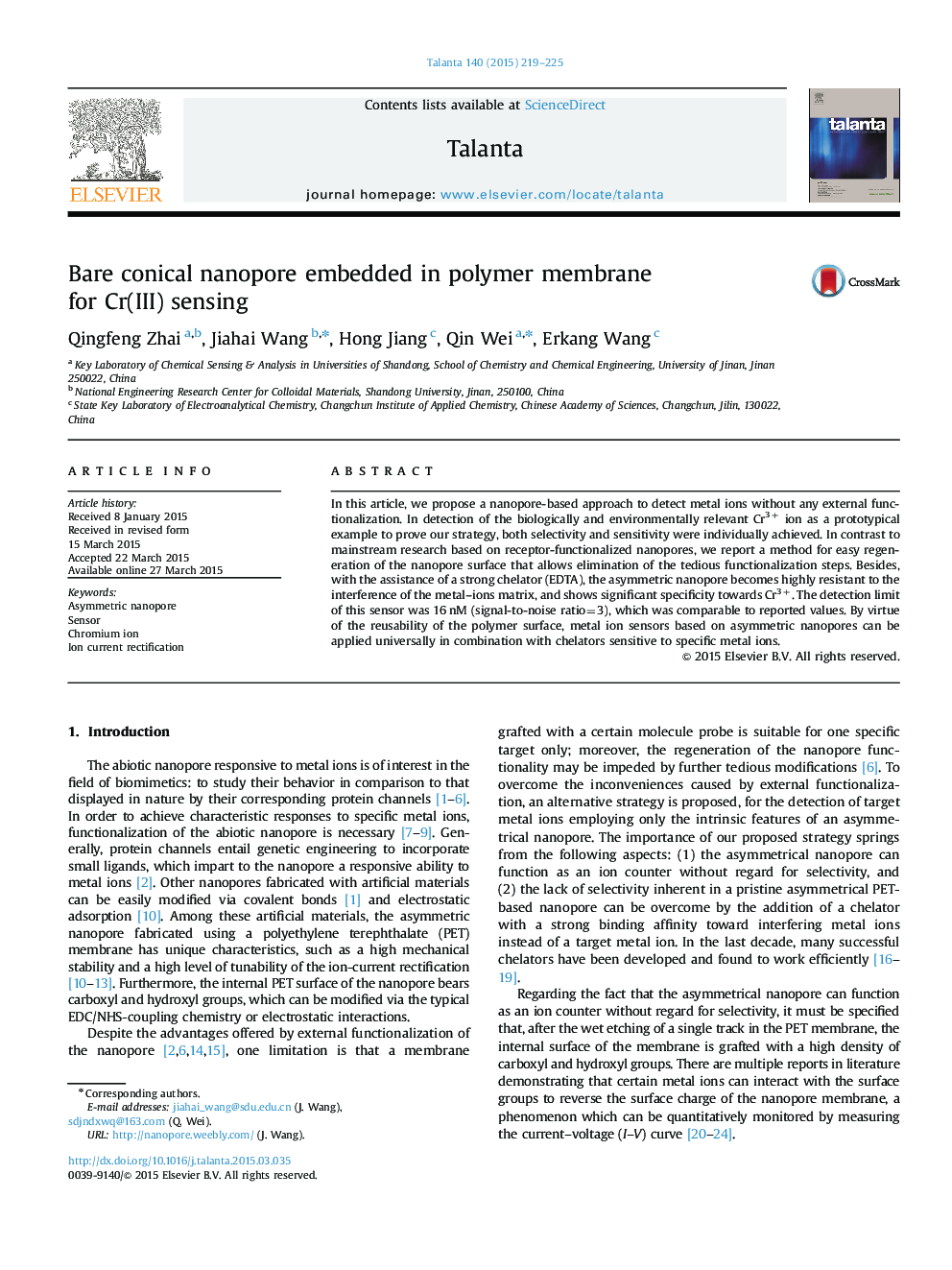| کد مقاله | کد نشریه | سال انتشار | مقاله انگلیسی | نسخه تمام متن |
|---|---|---|---|---|
| 1243079 | 1495795 | 2015 | 7 صفحه PDF | دانلود رایگان |

• A new sensing paradigm based on nanopore for Cr3+ was proposed.
• Carboxyl of the wet etched nanopore is an excellent chelator for metal ion.
• Nascent nanopore can selective detect Cr3+ without tedious functionalization.
• Nanopore sensor detects Cr3+ with reusable ability and wide applications.
In this article, we propose a nanopore-based approach to detect metal ions without any external functionalization. In detection of the biologically and environmentally relevant Cr3+ ion as a prototypical example to prove our strategy, both selectivity and sensitivity were individually achieved. In contrast to mainstream research based on receptor-functionalized nanopores, we report a method for easy regeneration of the nanopore surface that allows elimination of the tedious functionalization steps. Besides, with the assistance of a strong chelator (EDTA), the asymmetric nanopore becomes highly resistant to the interference of the metal–ions matrix, and shows significant specificity towards Cr3+. The detection limit of this sensor was 16 nM (signal-to-noise ratio=3), which was comparable to reported values. By virtue of the reusability of the polymer surface, metal ion sensors based on asymmetric nanopores can be applied universally in combination with chelators sensitive to specific metal ions.
The carboxyl and hydroxyl groups in the nanochannel are excellent chelators for metal ion binding, when strong chelator (EDTA) was added, which can staggeringly remove nearly all metal ions except Cr(III). The charges status of the nanopore can be quantitatively monitored by current-versus-voltage and has linear relationship with the concentration of Cr(III). In addition, nanopore-based biosensor was highly compatible with the nature lake water.Figure optionsDownload as PowerPoint slide
Journal: Talanta - Volume 140, 1 August 2015, Pages 219–225